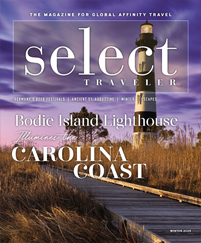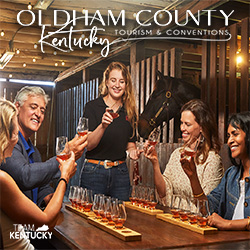Once travel restrictions end, many travelers plan to rush out and see the world. To avoid everyone’s flocking to the same few places, a travel trend that started before the pandemic will likely still apply once normalcy resumes.
“Second-city travel” is a term referring to visiting a lesser-known destination instead of similar larger cities. Second cities might not be the most evident choice, but they still offer the culture, food and high-quality attractions that travelers seek.
Those looking for a more authentic version of a destination often enjoy these types of cities, since they generally feature more locals than tourists, fewer crowds and more bang for your buck.
Instead of taking the same photos of the Eiffel Tower in Paris, for example, groups can focus their tour on Marseille, France, for less-crowded museums, mouth-watering French cuisine and more interactions with French residents.
While dreaming of travel, consider these second cities for a group experience without the touristy aftertaste.
Seville Instead of Barcelona
Tapas is not just a meal in Seville, Spain — it’s a lifestyle. Quieter than its larger counterpart, Barcelona, Seville is known for evenings centering around friends, tapas and drinks at various places around town.
The city’s laid-back vibe works well with its mild climate and extravagant festivals. The city’s impressive architecture seems to have frozen time, and visitors can walk past one treasured historic attraction after another.
Over the centuries, several civilizations fought over Seville, including the Phoenicians, the Romans, the Arabs and the Christians. Their various influences can still be seen in Seville.
Spain’s oldest city, Seville preserves three UNESCO World Heritage Sites: the Royal Alcazar of Seville, the Seville Cathedral and the Archive of the Indies. The remains of Christopher Columbus lie in the Seville Cathedral, one of the largest existing Gothic cathedrals.
The Royal Alcazar served as a residence of kings starting in the Middle Ages. Today, the ornate structure serves as the official residence of the Kings of Spain, making it one of the oldest active royal palaces in Europe.
Groups can watch a flamenco dance, an expression of the surrounding Andalusia region’s folklore. Begun in the 15th century by gypsies, the dance became popularized in the mid-19th century in flamenco bars.
Belfast Instead of Dublin
Friendly locals, fascinating history and lively pubs entertain guests in Belfast, Northern Ireland. Though part of the United Kingdom, Belfast retains its singular Irish culture without the crowds of Dublin.
A stroll down Cathedral Quarter shows off many of the city’s historic pubs full of character and Irish music. Belfast Food Tours offers a more comprehensive night out with its guided Whiskey Walk or Gin Jaunt for a selection of the town’s finest whiskeys and gins.
The city also attracts foodies at St. George’s Market, one of the city’s oldest attractions. The 1890 market allows guests to sample both local items and European delicacies like crepes.
Titanic Belfast tells the story of the Titanic and how the ill-fated ship was built in Belfast’s shipyard. Nine interactive galleries, an immersive movie screening of the wreck and special events like Tea on the Titanic bring the infamous ship to life.
More of Ireland’s past awaits at the Ulster Museum, Northern Ireland’s largest museum. Set in the stunning Belfast Botanic Gardens, the Ulster Museum showcases exhibits on the country’s archaeology, zoology and three-decade conflict between pro-Irish Catholics and pro-British Protestants, known as the Troubles.
Groups can still explore plenty of Irish castles in the area, including the city’s own Belfast Castle built in 1870. Visitors can also explore the historic St. Anne’s Cathedral, Belfast City Hall and the Grand Opera House.
A short drive from Belfast takes travelers to the dramatic Antrim Coast and the Giant’s Causeway. This remarkable outcropping of more than 40,000 basalt columns is a UNESCO World Heritage Site.
Oaxaca Instead of Mexico City
Though tourism crowds Mexican hot spots like Mexico City, Cancun and Tulum, Oaxaca City and the surrounding state of Oaxaca stays true to its heritage with colorful colonial buildings, acclaimed cuisine and charming local squares.
Many tours follow craft routes through the region, stopping at craft demonstrations by family members who have been involved in the business for generations.
In the city itself, groups can enjoy the slow pace and the emphasis on cuisine. The Zocalo is one of the city’s most well-known plazas, where travelers can soak in the atmosphere of marimba ensembles and traffic-free sidewalk cafes.
Culinary tours highlight the city’s mezcal specialty drinks, mole flavors and famous Oaxacan cheese. Guests can activate their senses at a trip to a local Oaxacan market for regional fruits, veggies, cheeses and chilies.
The Museum of Oaxacan Cultures introduces guests to the far-reaching history of the area. It follows the region’s past from pre-Hispanic to contemporary cultures. The most dazzling display lies in the Monte Alban exhibit. Visitors can view the buried treasure discovered in a Mixtec tomb from the site, used when Mixtecs reused an old Zapotec tomb to bury one of their kings amid his silver, turquoise, jade, gold and other jewels.
Monte Alban sits not far from Oaxaca City at an archaeological site dating to 500 B.C. The former Mesoamerican city is a UNESCO World Heritage Site.
Wellington Instead of Auckland
New Zealand’s capital city of Wellington may be smaller than Auckland, but the town makes up for it in culture and friendliness. Quirky coffee shops, boutique stores and historic architecture make the walkable town a pleasure to discover.
New Zealanders, known locally as kiwis, are notoriously chilled out and hospitable. Groups can enjoy these welcoming people as they sample the city’s celebrated gastronomy.
Most attractions lie a short walk from the waterfront, including the Museum of New Zealand Te Papa Tongarewa. Translated as the “container of treasures,” the museum offers interactive exhibits on the Maori culture, local art and natural history. One exhibit shows a colossal squid and then explores its life through 3D animation.
The city also offers a sizable city museum, a botanical garden and a zoo. The Beehive, New Zealand’s memorable parliamentary building, also offers tours.
Groups can enjoy the country’s natural beauty inside the city’s many parks or nearby at Otari-Wilton’s Bush and Kaitoke Regional Park.
Marseille Instead of Paris
Travelers seeking the romance of Paris without the long lines and high prices can enjoy Marseille, France. The emphasis on French cuisine, wine, art and culture remains a tenet of everyday life here. Yet its position on the Mediterranean has thrown in a mix of other cultures, making the city an interesting hodgepodge of heritages.
Most visitors start at Vieux Port, the city’s central hub. Travelers come to take photos, dine on fresh seafood and walk to several of the city’s top attractions.
Built in 2013, the Museum of European and Mediterranean Civilizations gives a comprehensive look into the region’s culture. The museum spans three buildings with exhibits on gods, spices, travel routes and more.
Like Paris, Marseille has its own must-see church. Notre Dame de la Garde is a city landmark overlooking the city and sea. Visitors come to marvel at the mosaic interior and golden nave.
History is tied to the present in the city, and nowhere is that more evident than on a stroll through Marseille’s Old Town. The picturesque neighborhood was first inhabited in 600 B.C. by the Greeks.
Though Cannes’ and Nice’s beaches attract all the attention, Marseille’s beaches also stun in natural beauty, though with considerably less expense. Boat rides from the city to the cliffs of the Calanques offer gorgeous landscapes. Cruises can also sail by Chateau d’If, the setting for the novel “The Count of Monte Cristo.”
Marseille’s reputation as a cultural melting pot extends to its culinary offerings. North African cuisine served with a French twist has grown popular. French classic dishes, such as bouillabaisse, also remain in demand by locals and visitors.
San Jose Instead of San Francisco
To avoid the throngs surrounding the Golden Gate Bridge, visitors should try San Francisco’s neighboring city San Jose. The tech-savvy town not only serves as the headquarters for Google, Facebook and Apple but also holds its own in cuisine and attractions.
Groups can travel around the world each night in San Jose with a wide range of culinary options, from Brazilian to Indian to Greek. Award-winning wineries cater to groups with tours and tastings.
The city boasts several engaging attractions, such as the Winchester Mystery House, the Lick Observatory and the San Jose Museum of Art. The Tech Museum of Innovation reflects the city’s forward-thinking reputation. The hands-on technology and science museum’s exhibits include “Body Worlds Decoded,” “Cyber Detectives” and “Innovations in Healthcare.”
San Jose’s residents prioritize access to nature, which groups can enjoy at the 5.5-acre Municipal Rose Garden, 5,242-acre Castle Rock State Park and 172-acre Kelly Park.









